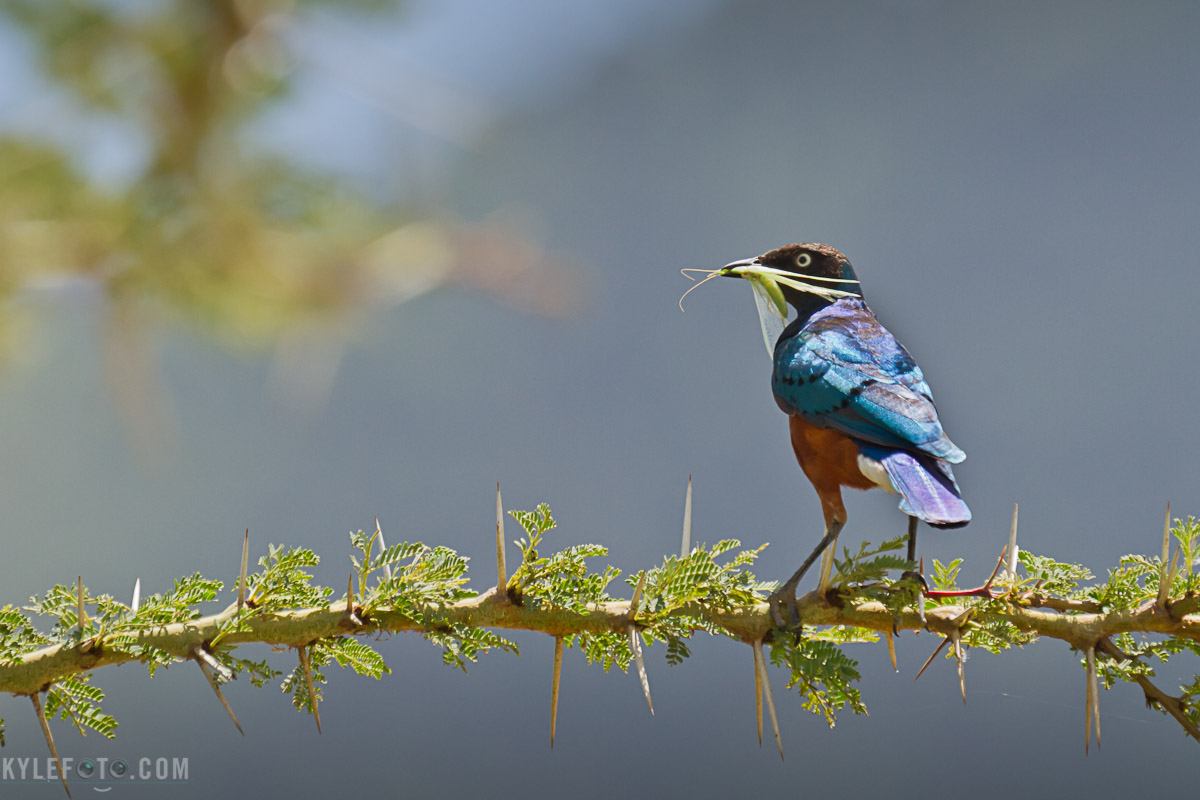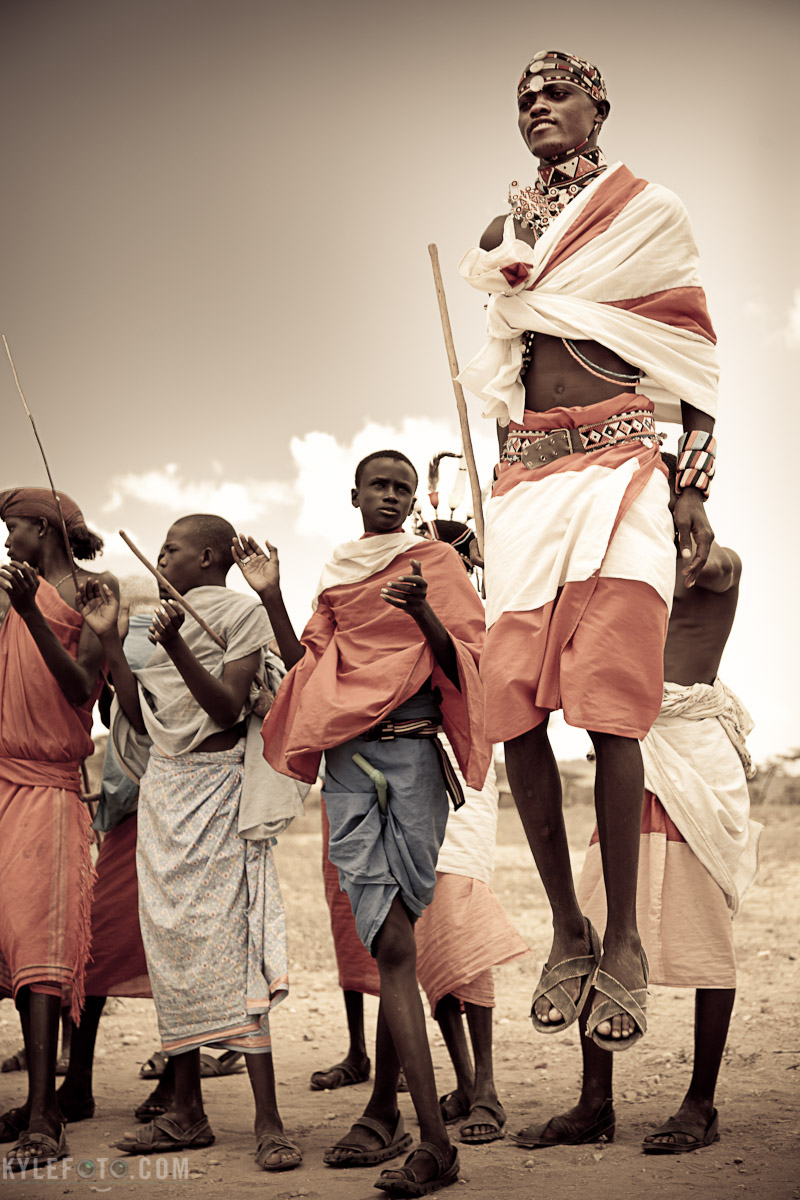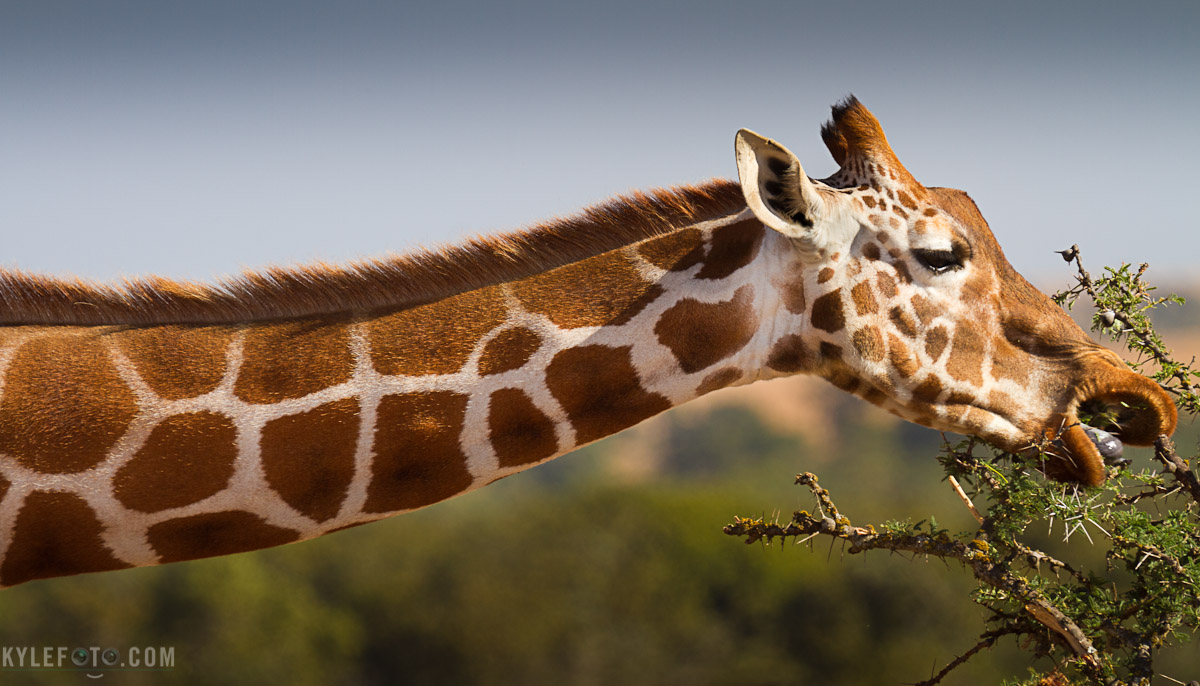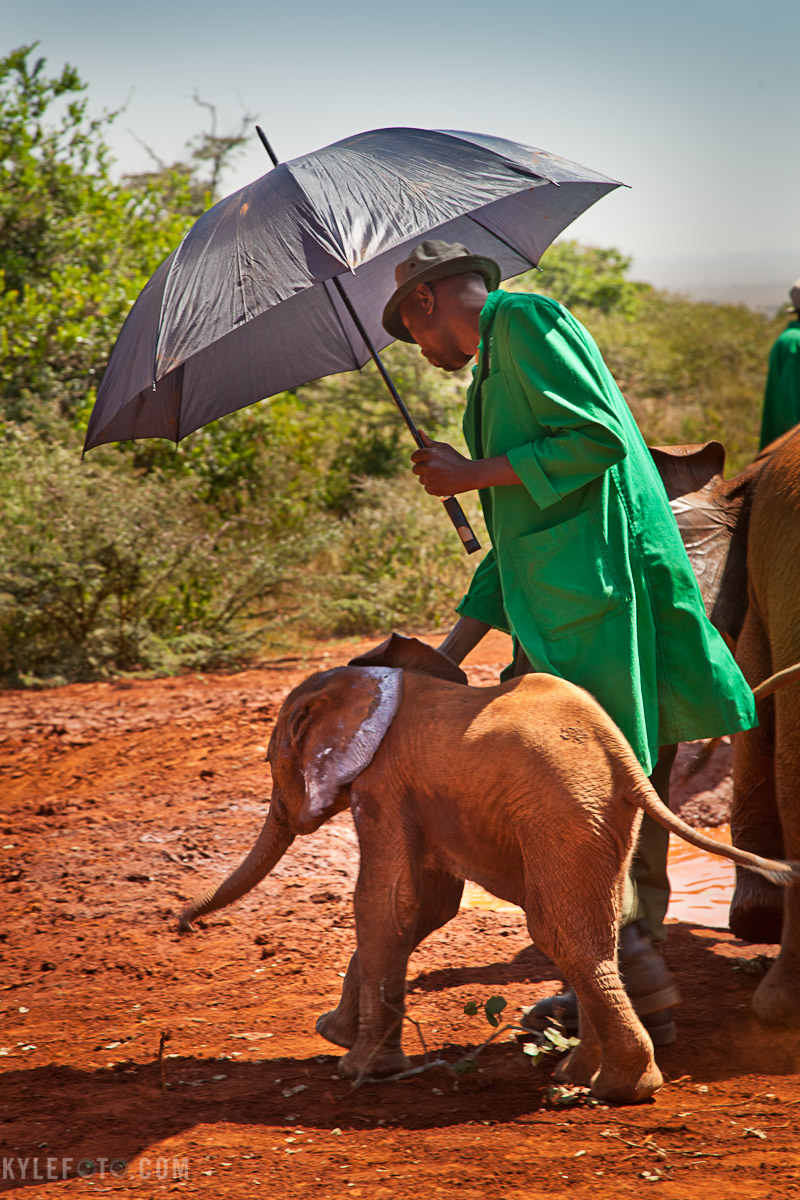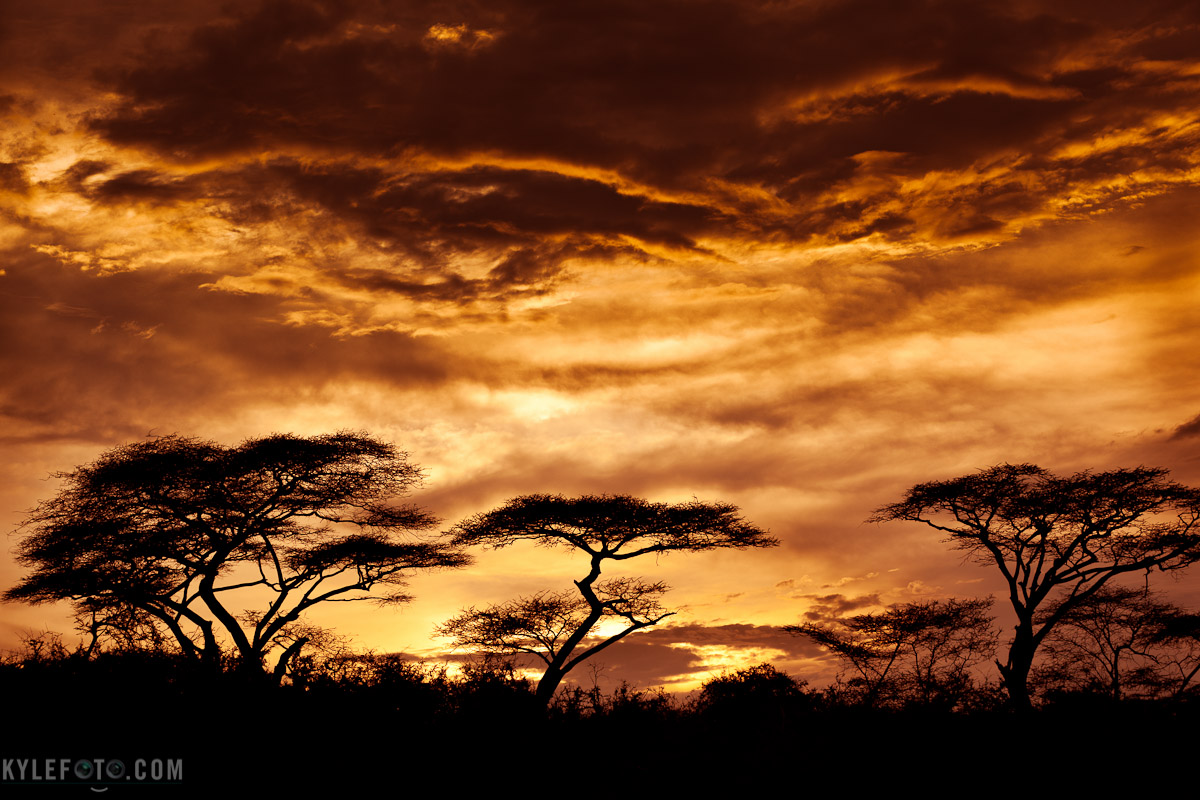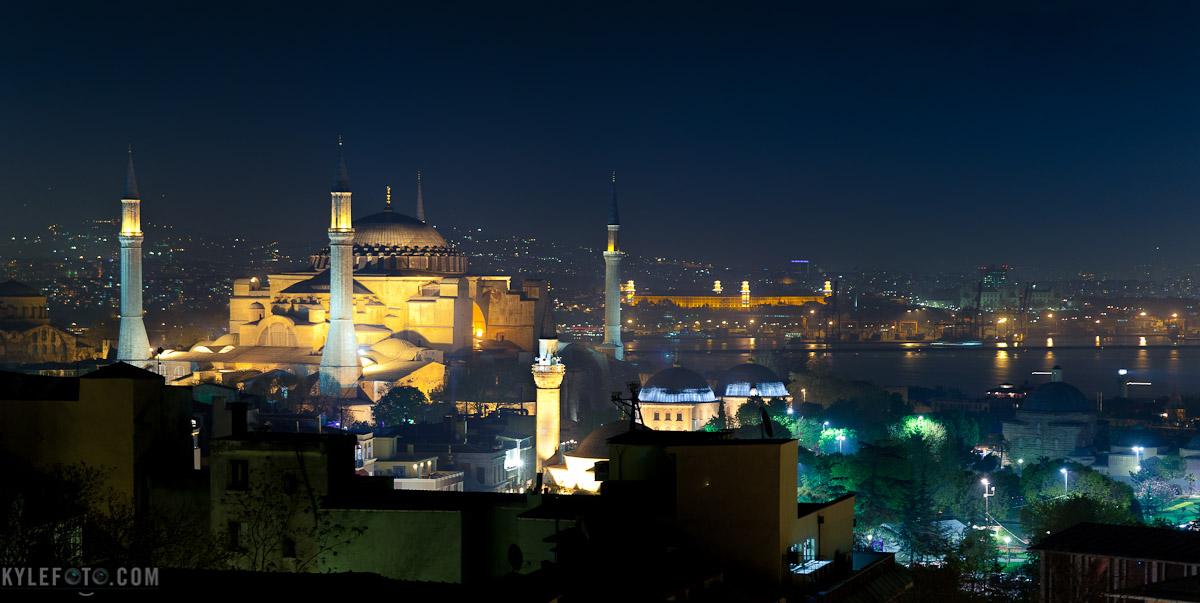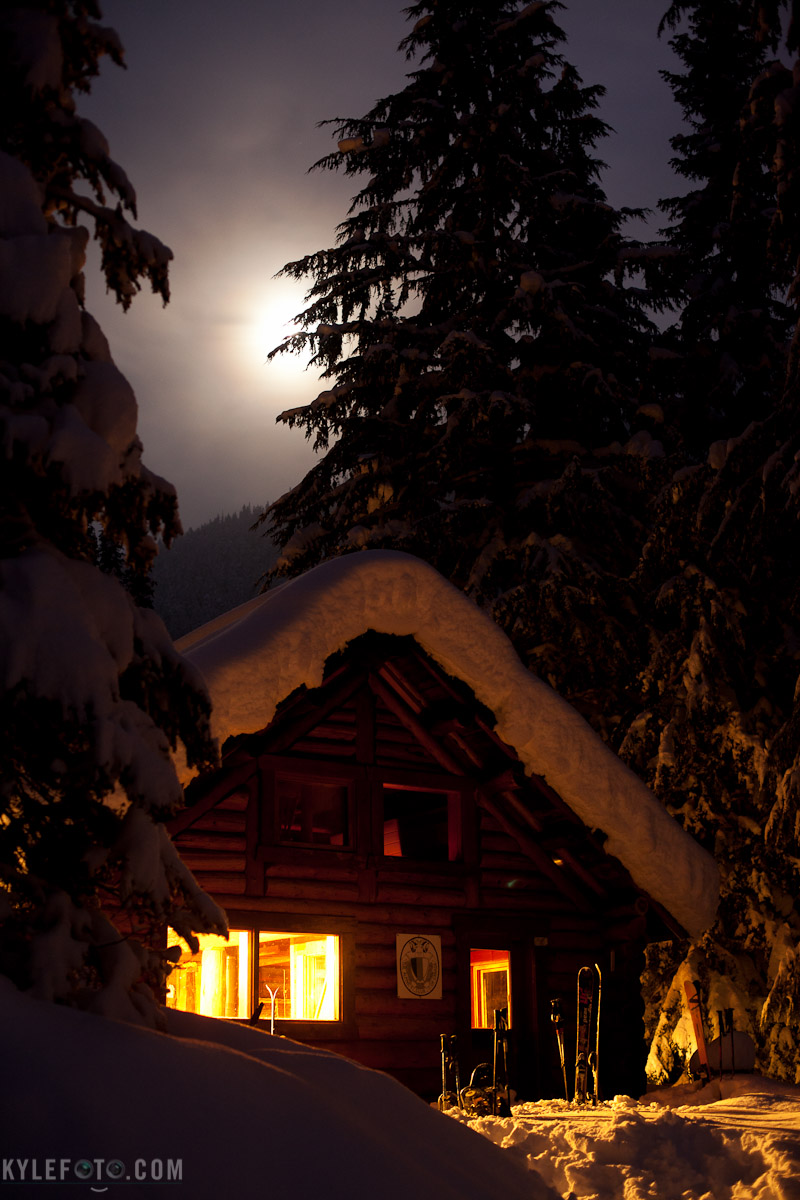On safari in Tanzania, Africa Anyone who has ever owned or spent time with a cat would feel right at home in the Serengeti of Tanzania while watching the behaviour of this male lion slinking up to it's prey. After hanging around with his brothers he decided to head off towards the herd of wildebeest that had wandered into their midst. Us watching in our vehicle with baited breath, our camera trigger fingers were itching with anticipation as this male expertly crept towards the wildebeest and vultures, keeping his body low to the ground with every deliberate and careful motion. At last the moment we thought had arrived: the big cat revealed his presence to the wildebeest as they scattered away from him, the vultures filling the sky with in an explosion of feathers.
This powerful and successful hunter bolted towards the wildebeest, took one look at them, and proceeded to lap up water in the nearby watering hole hidden by the tall grass. All this work, and all this teasing was just practice and fun on the lions behalf. We looked at each other and laughed as the now quenched lion returned to his resting spot among his brothers.
Photographic Details: Sitting as low to the ground as I could get I was able to make the lion in the foreground visually closer to the wildebeest in the background. More interested in showing what the lion was looking at I decided to focus on the wildebeest to put the viewer more in the lions perspective. I also set the white balance to "cloudy" mode, to add an extra warmth to the image to help convey the extreme heat of this environment. Canon EOS 7D 1/200s f/8.0 ISO100 400mm (35mm eq:640mm)




